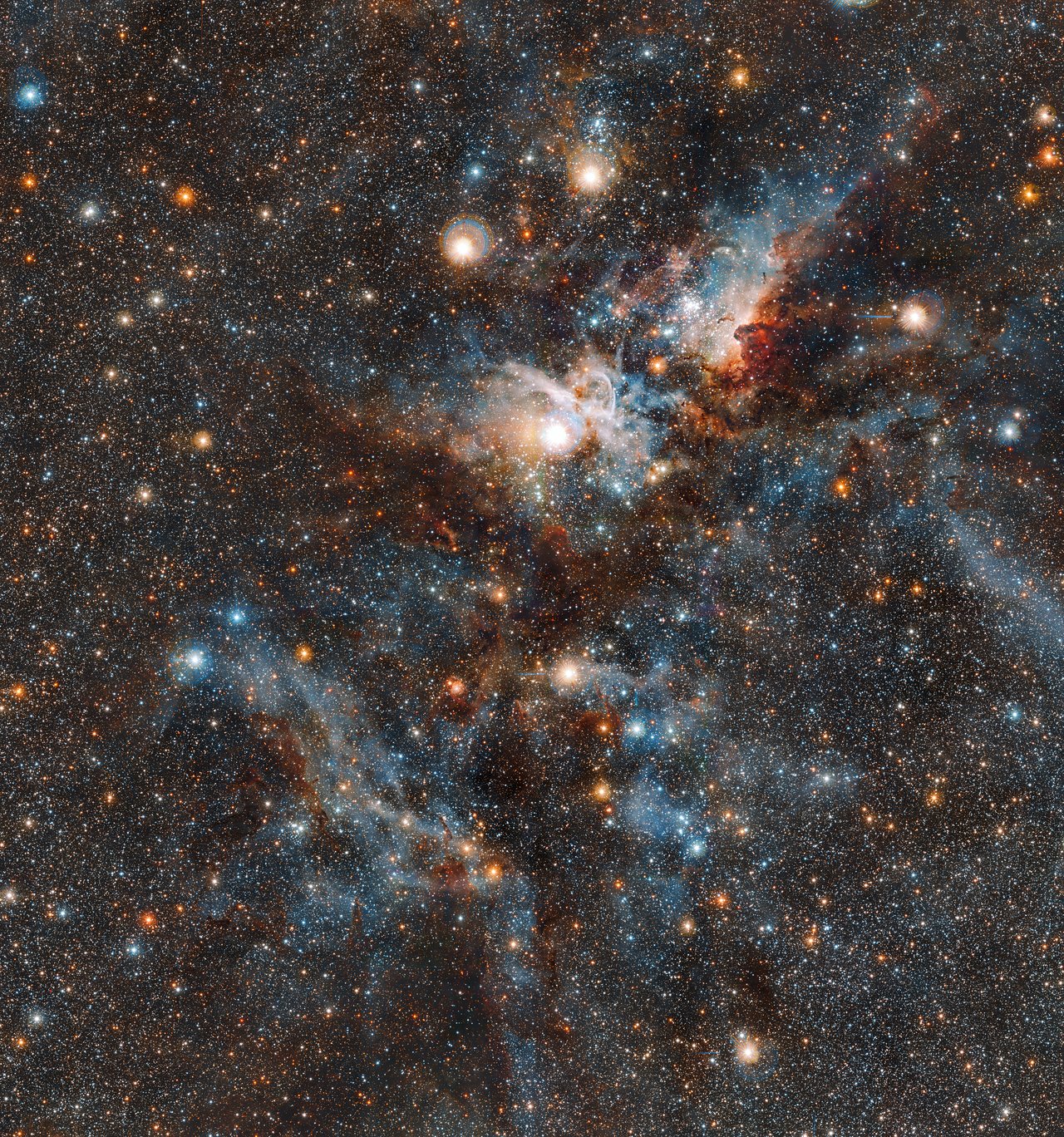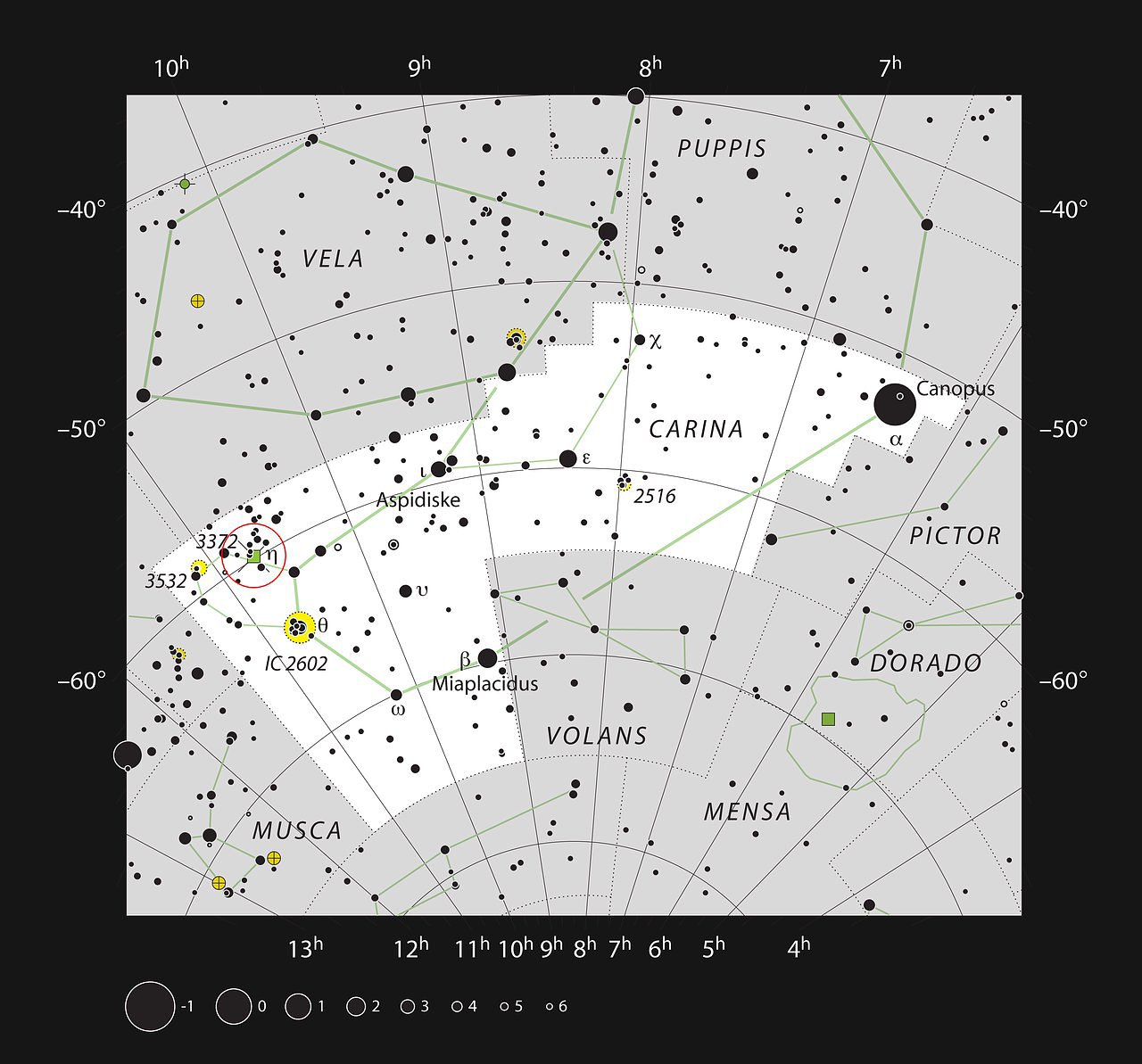Baby Stars Glow Through Dust in These Sparkling Views of the Carina Nebula
Stellar wombs in the constellation Carina bring new life to matter that once belonged to dead stars.
Clusters of baby stars appear swathed in the dusty material that meanders throughout the Carina Nebula in a gorgeous new photo from the European Southern Observatory(ESO). [See more awesome photos of the Carina Nebula]
ESO's VISTA, or Visible and Infrared Survey Telescope for Astronomy, is the world's largest infrared telescope, and it can capture nuanced details as the new stars take the equivalent of their first cosmic breaths. The telescope's large mirror and sensitive detectors made the mesmerizing photo possible, ESO officials wrote in a photo description Wednesday (Aug. 29).
The Carina Nebula dazzles in the southern sky, and it is approximately 7,500 light-years from Earth. This means that this photo shows how the nebula's clouds looked when humans were not yet out of the Stone Age. The light has been traveling toward Earth ever since then, providing a grand perspective on the size of the Milky Way galaxy, which is home to both our solar system and the Carina Nebula.
The teal-and-chocolate-colored clouds are illuminated by bright stars in the Carina Nebula. The regions with fewer clouds form as new stars start producing high-energy radiation and stellar winds, thereby dispersing the remaining material from their cosmic cribs, according to the ESO.
The captivating, glowing orb above the image's center, sitting in the middle of the dark V formation, is the large binary star system called Eta Carinae. In the 1830s, this system was one of the brightest objects in the sky, but that's no longer the case; according to the ESO, Eta Carinae is fading because it's approaching the explosive end of its life, ultimately producing more material to someday coalesce into a young new star.
The dramatic end that astronomers predict for Eta Carinae is due to its instability and size. According to NASA, scientists have found that Eta Carinae's brighter, primary star has a mass about 90 times that of the sun and that it's about 5 million times brighter.
Breaking space news, the latest updates on rocket launches, skywatching events and more!
Follow Doris Elin Salazar on Twitter @salazar_elin. Follow us @Spacedotcom, Facebook and Google+. Original article on Space.com.

Doris is a science journalist and Space.com contributor. She received a B.A. in Sociology and Communications at Fordham University in New York City. Her first work was published in collaboration with London Mining Network, where her love of science writing was born. Her passion for astronomy started as a kid when she helped her sister build a model solar system in the Bronx. She got her first shot at astronomy writing as a Space.com editorial intern and continues to write about all things cosmic for the website. Doris has also written about microscopic plant life for Scientific American’s website and about whale calls for their print magazine. She has also written about ancient humans for Inverse, with stories ranging from how to recreate Pompeii’s cuisine to how to map the Polynesian expansion through genomics. She currently shares her home with two rabbits. Follow her on twitter at @salazar_elin.



